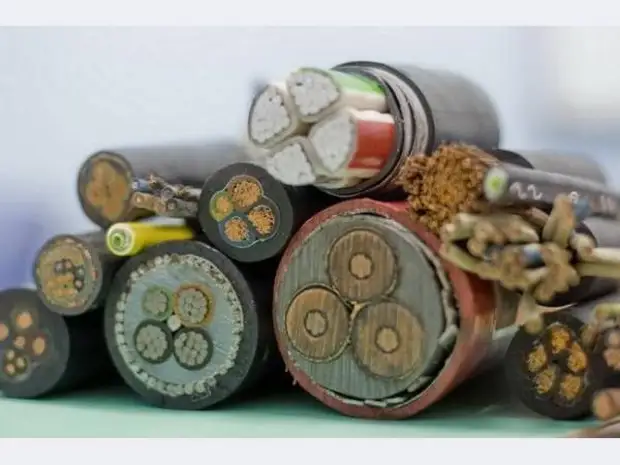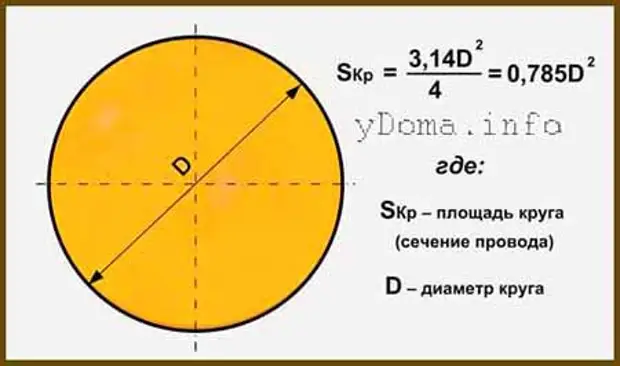
Conducting wires are selected by the magnitude of currents occurring over them and can be defined by tables or settlement. Conducting sections table Wiring installation requirements are indicated in "Rules of electrical installation devices" (PUE). In the same regulatory document there are tables with extremely valid currents depending on the sections of the conductors and operating conditions. Below is a table for cases, most often found when laying wiring in homes and apartments.
It should be borne in mind that according to the PUE, the cross section of copper wires for residential buildings should be at least 2.5 square meters. mm to meters and 1.5 square meters. mm after them. Before laying electrical wiring, examine PUE positions regarding residential buildings. Compliance with the requirements indicated in them will increase the reliability of power supply and avoid the claims of the Energonadzor authorities.
The nominal load of wire conductors depends on the cooling conditions of the conductors. The wires, laid in the walls, channels and pipes, are not blown by air, so slower cooled. Top wires are given warmly worse than thin and withstand a smaller current density. The current density is determined by the division of the permissible current to the cross section of the conductors. For aluminum wires, it is in the range of 5 - 10 A / sq. mm, for copper - 7 - 15 A / sq. mm. By multiplying the current density on the load current, you can determine the desired cross-section of the wires.
Apply copper wires for wiring around the apartment - they are less oxidized and do not break on bends, therefore they have greater reliability.
The use of aluminum on dangerous industries is prohibited not without reason. Calculation of the cross section of the wires should be started with the definition of the total load power on the electrical network. It is especially important to take into account powerful consumers of electricity, having the following characteristics: Iron - 1 - 2 kW; washing machine - up to 2 kW; Vacuum cleaner - 1 - 2 kW; Water heater - about 2 kW; electric furnace - 1 - 2 kW; Microwave - 0.6 - 2 kW; electric kettle - up to 2 kW; Air conditioning - up to 3 kW; The refrigerator is about 1 kW; Electric heating boiler - 2 - 5 kW; Lighting - the power of one light bulb multiplied by their number. The power of electrical devices can be clarified in the instruction manual. Calculating the total power of consumers and dividing its value to the voltage of 220 volts, we determine the current current.
Further on tables or current density we find the cross section of the conductors.
When calculating power, you need to keep in mind that not all consumers turn on simultaneously - if the heating boiler works, no one uses air conditioning. This fact can be taken into account by multiplying the total capacity to the demand ratio. The experimental way is established that for apartments with a total capacity up to 14 kW, it is 0.8, to 20 kW - 0.65, to 50 kW - 0.5. For example, consider the selection of wire sections from the junction box to the kitchen sockets. The kitchen has a 1 kW refrigerator, a dishwasher - 1 kW, an electric kettle - 2 kW, a microwave - 0.8 kW, an electric oven - 2 kW and air conditioning - 2 kW.
The total capacity is 8.8 kW. I will multiply this value to the demand ratio of 0.8 and get 7.04 kW. We translate kilowatta to watts (1 kW = 1000 W) and determine the load current: i = 7040/220 = 32 A. According to the table for hidden wiring, we choose the copper liquid wire with a cross section of 3 square meters. mm or aluminum - 5 square meters. mm. We obtain the same sections by separating the current to the average values of its density. Sometimes there is an unknown cross section. Knowing the diameter, it is easy to determine the section according to the formula s = 0.785d2, where D is the diameter of the conductor. For multicore wires, the result is multiplied by 0.785.
The more water you need, the larger the diameter you need a pipe and for current. The larger the current consumption by electrical appliances, the greater the cross section of the conductive wires in the cable should be.
What is the cross section live wires and how to calculate it? If you have a snack wire and look at it from the end, you will see the living room, here is the end of this vein, that is, the area of the circle and there is a wire section. The diameter of the circle is greater, the greater the cross section of the wire and, therefore, the wire is capable of warming up to a permissible temperature, transmit a larger current.

A source
